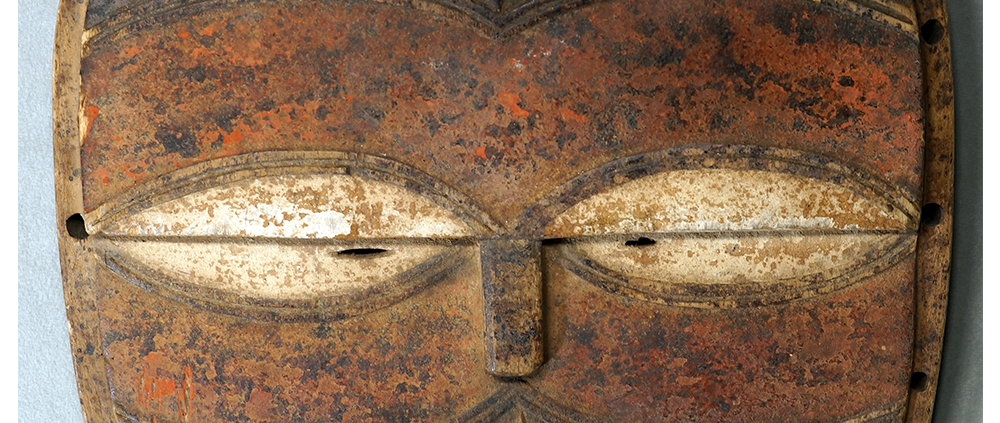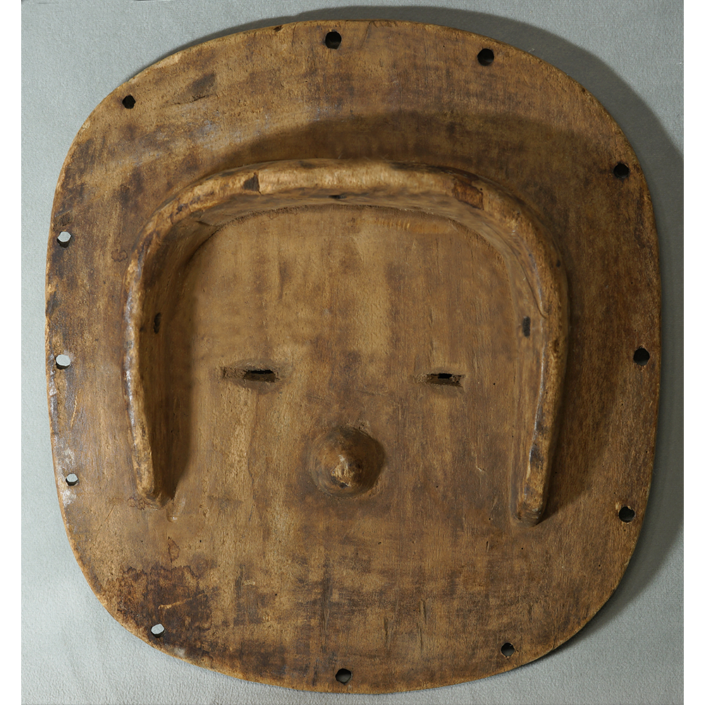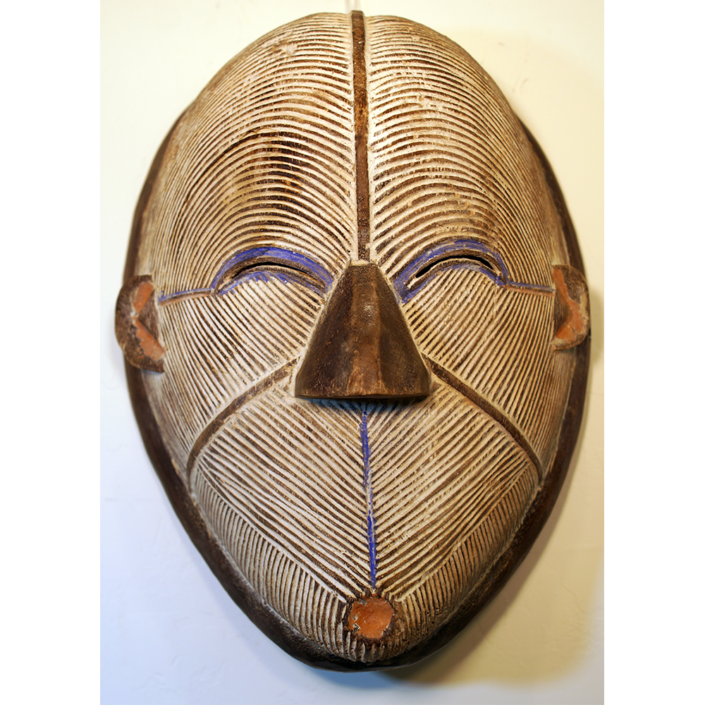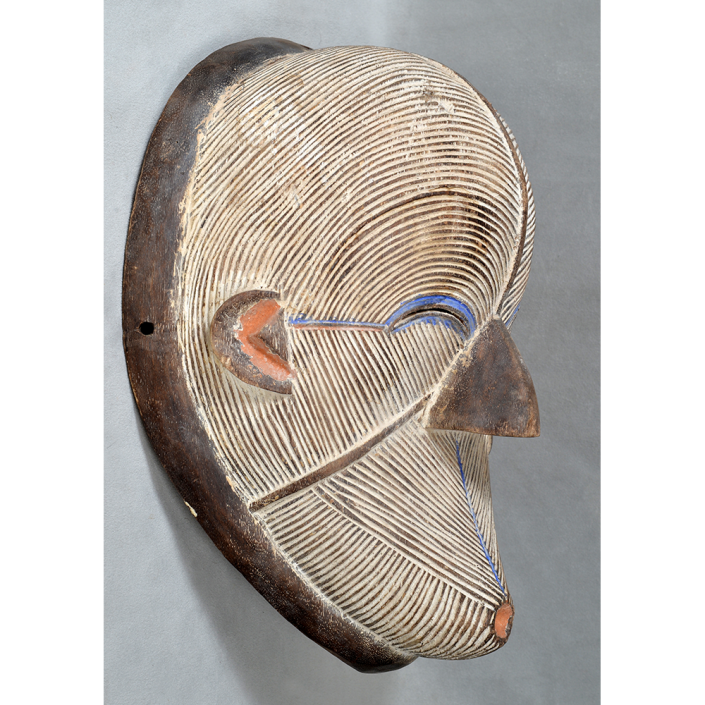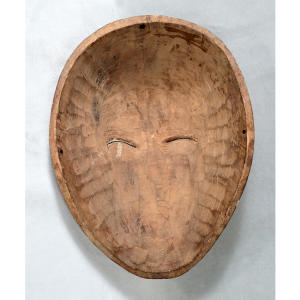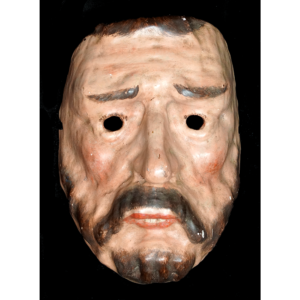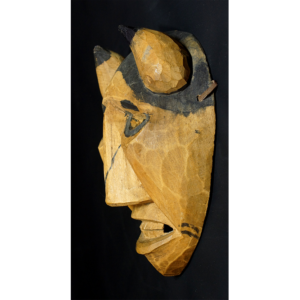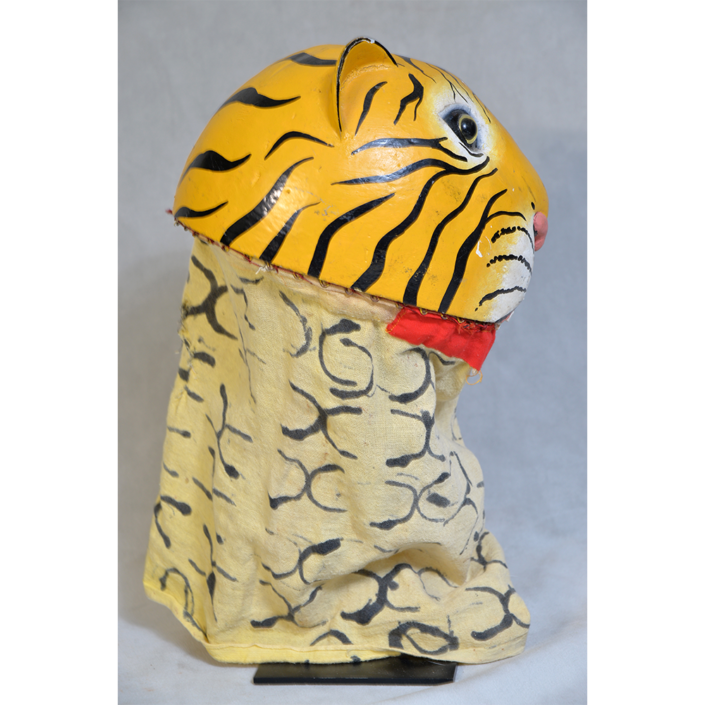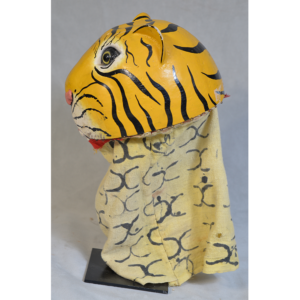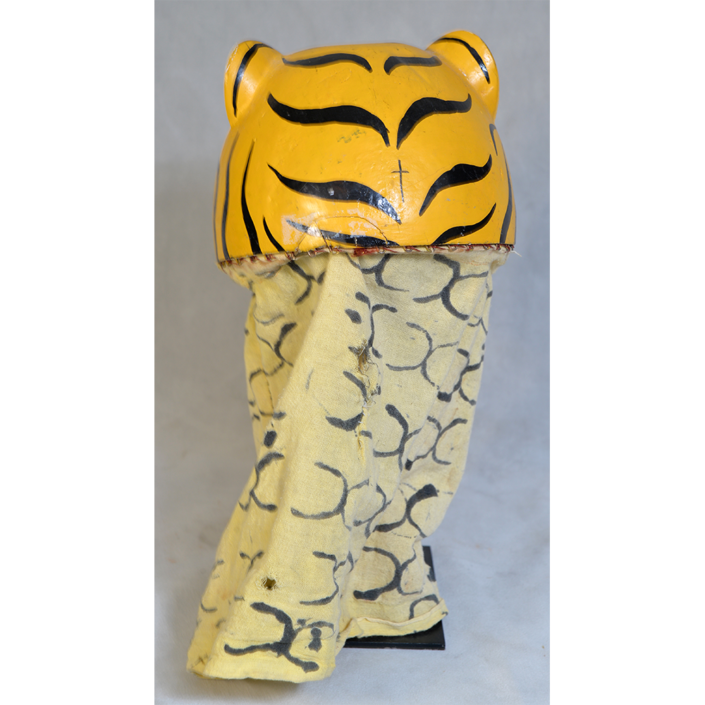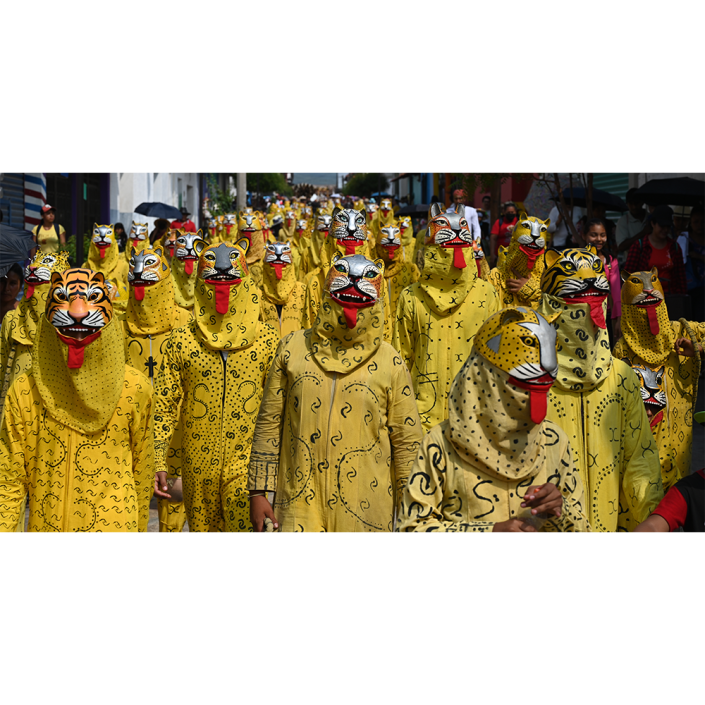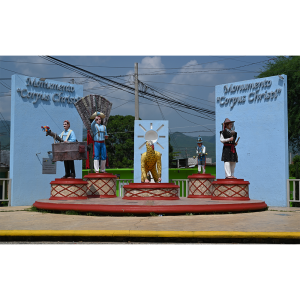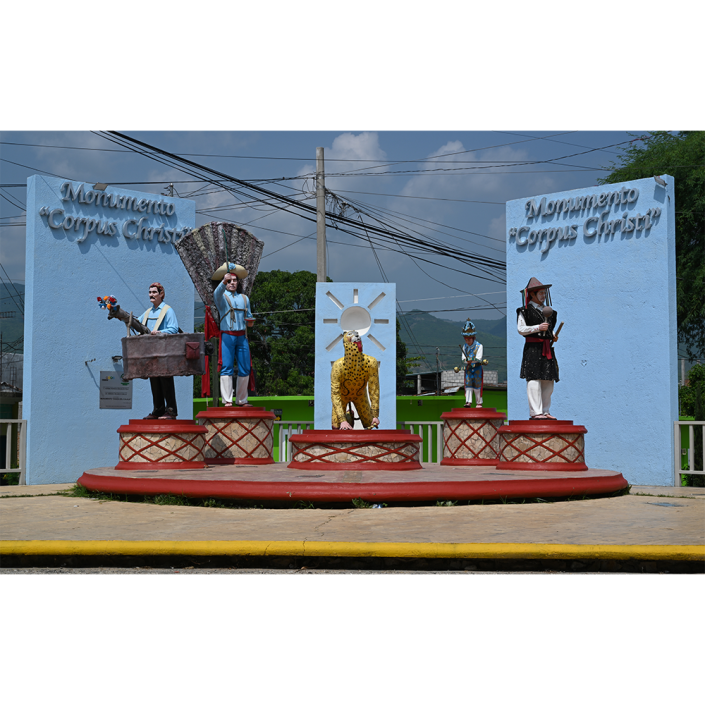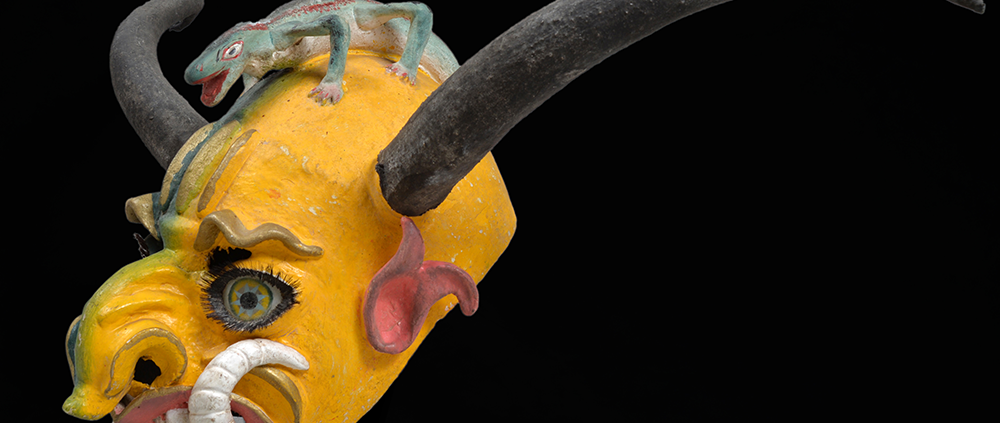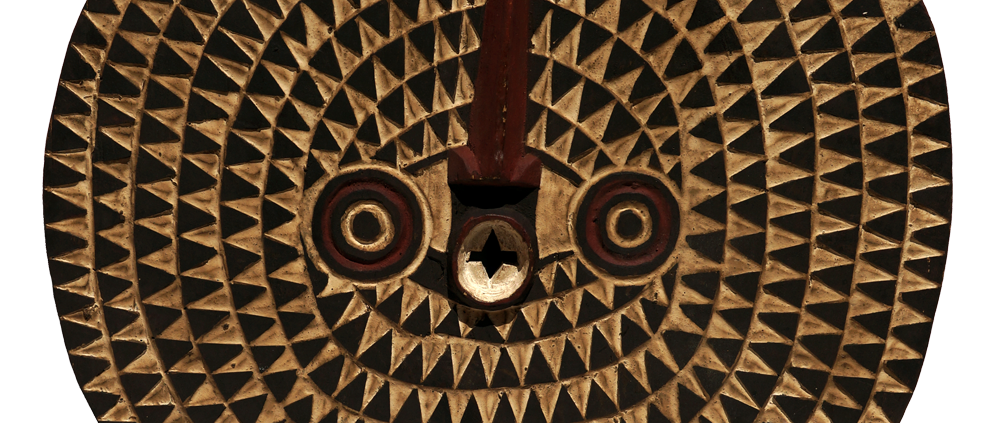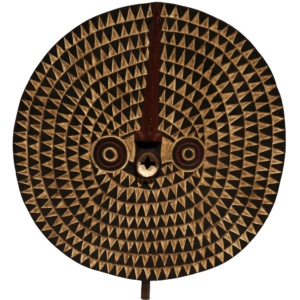TITLE: Teke Kidumu Mask
TYPE: plank mask
GENERAL REGION: Africa
COUNTRY: Democratic Republic of Congo
ETHNICITY: Teke
DESCRIPTION: Teke Kidumu Society plank mask
CATALOG ID: AFCD021
MAKER: Unknown
CEREMONY: Adult Initiation; Funeral; Secret Society
AGE: 2000-2005
MAIN MATERIAL: wood
OTHER MATERIALS: kaolin; pigment
The Teke people of the Democratic Republic of Congo (formerly Zaire) established a kingdom in the 8th century on the Zaire River, ruled by a monarch whose authority is primarily spiritual. Political power is exercised by a structure of regional and village clan chiefs. Chiefs and priests, always men, belong to Mungala Society.
The Kidumu Secret Society, composed solely of adult men, plays a central role in adult initiation rituals, funerals and other major village events. In the northwest region of their territory, a dancer from the Kidumu Society wears an abstract plank mask of the kind shown here, with a costume of raffia fiber and feathers to hide the body. The mask is associated with a bush spirit known as “Nkita.” Representing the spirit, the masquerader enters the village from the forest and dances an energetic cartwheeling dance alone to music rather than in a group before retiring again to the forest.
